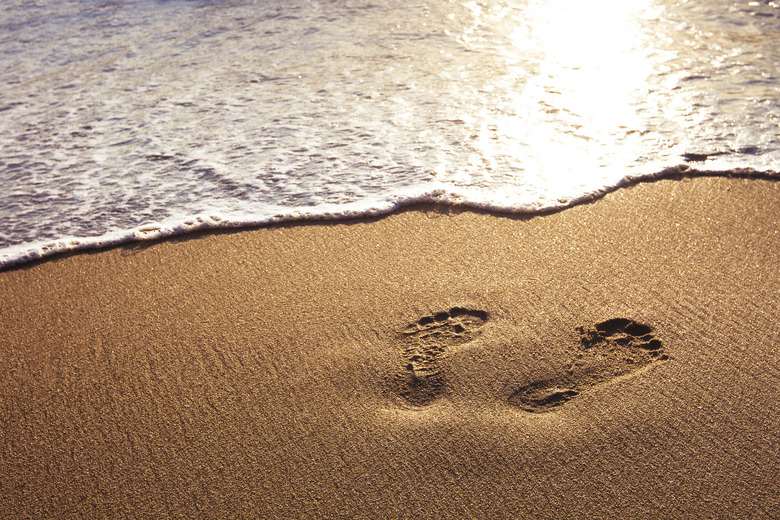Interesting Facts About Beaches
Flat areas of land bordering oceans, seas, rivers and lakes, beaches are unique, ever-changing environments rich in animal and plant life. People use beaches to relax, sunbathe, play sports, walk, fish and pursue other leisure activities, usually unaware of what beaches can tell us about the local environment, weather and wildlife. There are many interesting facts about the seaside, and beach information is easy to come by. Visiting beaches regularly helps us see how they change, but remember that these dynamic, fragile habitats require our protection.
Sandy Stories and Beach Trivia
Sandy Stories and Beach Trivia
Sand, pebbles, shingle, gravel and other beach materials tell us about the local geology and environment around beaches. Rain washes soil from inland out to sea, and the finer particles of soil, such as clay and silt, are carried away, but the larger, heavier particles of sand are deposited along the shoreline. The color of beach sand or other materials depends on the local geology. Hawaii has black beaches made of volcanic rock and green beaches made from a dense local mineral called olivine. Pebble beaches occur near fast-flowing rivers and exposed shorelines, where the force of the water carries pebbles to the shore and heavy seas wash everything else away. Dead coral fragments ground up by waves make white sand beaches.
Sea Change
Sea Change
Beaches are ever-changing environments. Within one human lifetime, beach shorelines can grow or shrink by 10s of feet due to the action of waves, wind, storms, floods and other weather extremes. Waves can erode beaches and also carry material to other areas, widening shorelines. Waves erode the bases of cliffs until eventually they collapse onto beaches, changing the coastline overnight. Wind blows sand beyond the waves and forms sand dunes that become colonized by plants. This vegetation slows the wind, preventing it from blowing the sand away, and the dunes grow larger over time. At the shoreline, waves pull sand along the sea floor, creating sand bars that heavy waves gradually push back toward the shore.
Beach Life
Beach Life
Organisms live in every area of a beach. Diatoms, algae and other microorganisms live in the sand — large concentrations of diatoms give the sand a golden sheen. Invertebrates such as ghost shrimps (Callianassa major) also live in sand, creating burrows you can sometimes see as small openings on the surface. Ghost crabs (Ocypode quadratus), blue crabs (Callinectes sapidus), pagurid crabs (Pagurus spp.) and many other crab species live on shorelines, and salt-tolerant grasses and other plants grow in dry beach areas. Shore birds such as the sandwich tern (Sterna sandvicensis) nest in the bare sand of upper beach zones. Seals and other marine mammals rest on the sand, and land mammals such as foxes, raccoons and feral cats scavenge along beaches.
Fragile Shore
Fragile Shore
Beaches are fragile environments that require protection from human pollution and damage. Pesticides, fertilizers, garbage and other pollution that gets washed onto beaches during storms damages wildlife habitats and introduces toxins into the sea, poisoning living organisms and making swimming unsafe. People trampling over rocky beaches and collecting crabs, mollusks and other organisms also damages beach environments. When visiting a beach, step carefully and lightly on rockpools, avoiding mollusks clinging to the rocks and patches of algae, which can contain hundreds of living creatures. Examine beach creatures gently and put them back where you found them. Don't take animals home with you — they're unlikely to survive — and don't remove beach materials.
Cite This Article
MLA
Green, Jenny. "Interesting Facts About Beaches" sciencing.com, https://www.sciencing.com/interesting-beaches-7685689/. 16 July 2018.
APA
Green, Jenny. (2018, July 16). Interesting Facts About Beaches. sciencing.com. Retrieved from https://www.sciencing.com/interesting-beaches-7685689/
Chicago
Green, Jenny. Interesting Facts About Beaches last modified August 30, 2022. https://www.sciencing.com/interesting-beaches-7685689/
